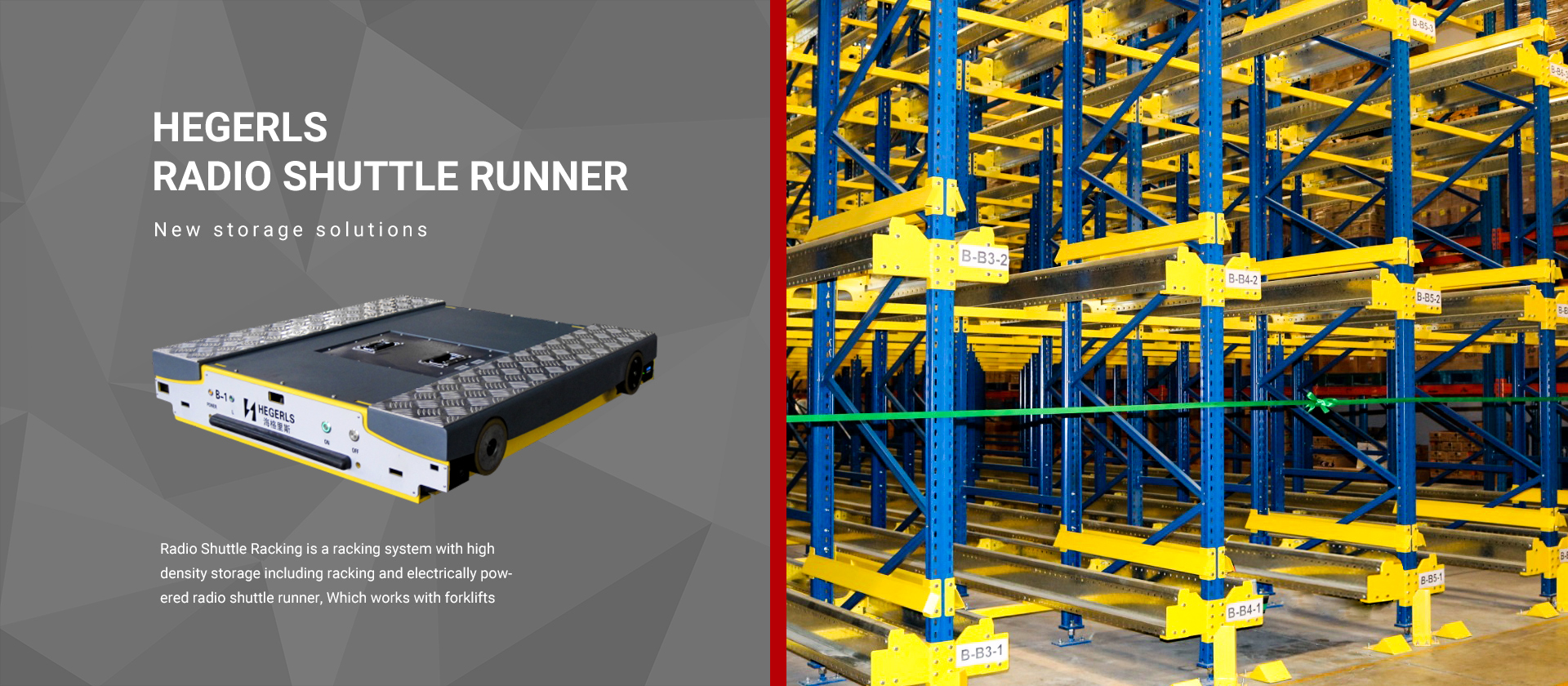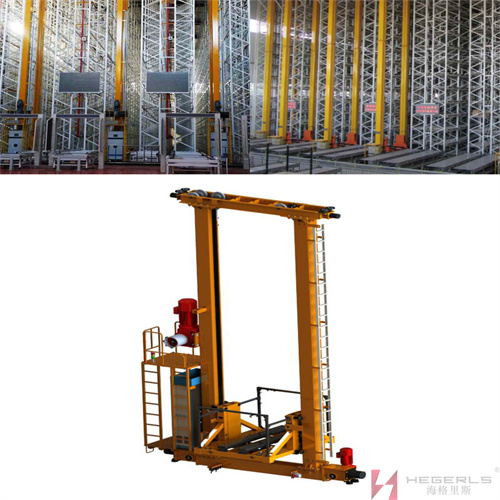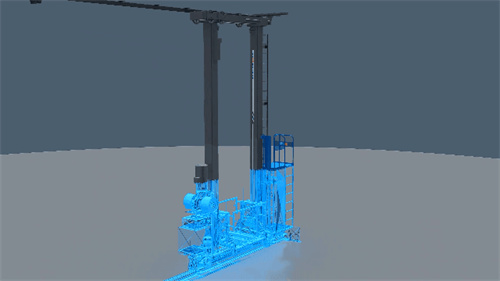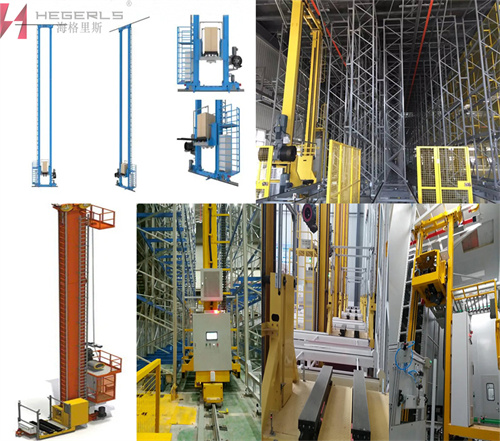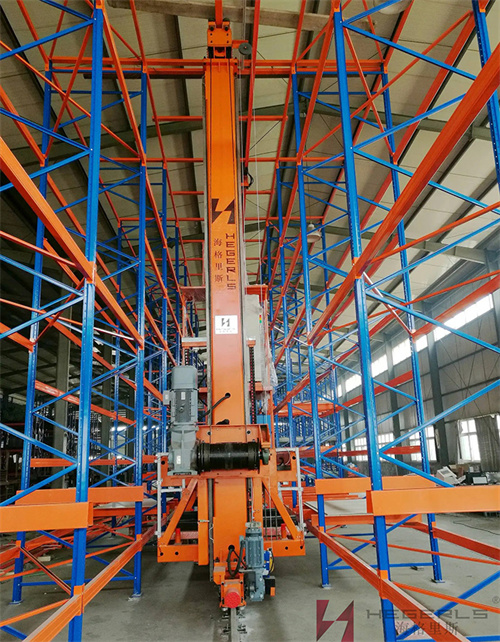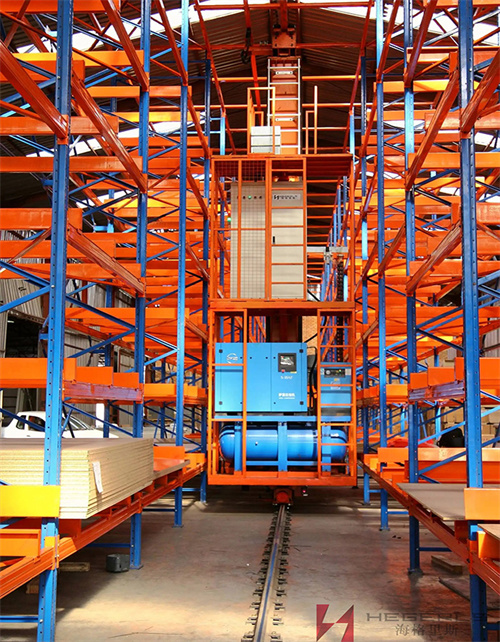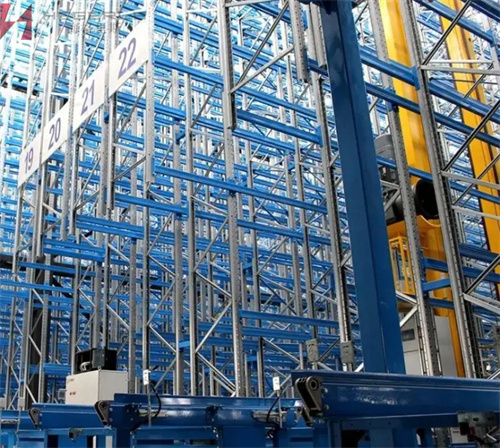Automated three-dimensional warehouse is an important part of logistics. It has many advantages such as saving land, reducing labor intensity, eliminating errors, improving the level of warehousing automation and management, improving the quality of management and operators, reducing storage and transportation losses, effectively reducing the backlog of working capital, and improving logistics efficiency, At the same time, the automatic three-dimensional warehouse connected with the factory level computer management information system and closely connected with the production line is an essential key link of CIMS (Computer Integrated Manufacturing System) and FMS (flexible manufacturing system). It is also a system that automatically stores and takes out logistics without direct manual intervention. It is a high-tech product of the development of modern industrial society, and it is important for enterprises to improve productivity Cost reduction plays an important role.
In recent years, with the continuous improvement of enterprise production and management, more and more enterprises realize that the improvement and rationality of logistics system is very important to the development of enterprises. The stacker is the most important lifting and stacking equipment in the automated three-dimensional warehouse. It can transport goods from one place to another through manual operation, semi-automatic operation or full-automatic operation. It can shuttle back and forth in the automated three-dimensional lane and store the goods at the lane entrance into the cargo compartment; Or on the contrary, take out the goods in the cargo compartment and transport them to the lane crossing, that is, the stacker is a rail or trackless trolley equipped with lifting equipment. The stacker is equipped with a motor to drive the stacker to move and lift the pallet. Once the stacker finds the required cargo space, it can automatically push or pull the parts or cargo boxes into or out of the rack. The stacker has a sensor to detect the horizontal movement or lifting height to identify the position and height of the cargo space, Sometimes you can also read the name of the parts in the container and other relevant parts information.
With the development of computer control technology and automatic three-dimensional warehouse, the application of stacker is more and more extensive, the technical performance is better and better, and the height is also increasing. So far, the height of stacker can reach 40m. In fact, if it is not restricted by the warehouse construction and cost, the height of stacker can be unrestricted. The operating speed of the stacker is also constantly improving. At present, the horizontal operating speed of the stacker is up to 200m / min (the stacker with small load has reached 300m / min), the lifting speed is up to 120m / min, and the telescopic speed of the fork is up to 50m / min.
Composition of stacker
The stacker is composed of a frame (upper beam, lower beam and column), a horizontal traveling mechanism, a lifting mechanism, a cargo platform, a fork and an electrical control system. The details are as follows:
frame
The frame is a rectangular frame composed of an upper beam, left and right columns and a lower beam, which is mainly used for bearing. In order to facilitate the installation of parts and reduce the weight of the stacker, the upper and lower beams are made of channel steel, and the columns are made of square steel. The upper crossbeam is provided with a sky rail stopper and a buffer, and the lower crossbeam is provided with a ground rail stopper.
Operating mechanism
The running mechanism is the driving mechanism of the horizontal movement of the stacker, which is generally composed of motor, coupling, brake, reducer and traveling wheel. It can be divided into ground running type, upper running type and intermediate running type according to different positions of running mechanism. When the ground running type is adopted, four wheels are required to run along the monorail set on the ground. The top of the stacker is guided by two sets of horizontal wheels along the I-beam fixed on the upper beam. The upper beam is connected with bolts and columns, and the lower beam is welded with channel steel and steel plate. The traveling driving mechanism, master-slave motor wheel, electrical cabinet, etc. are all installed on it. The two sides of the lower beam are also equipped with buffers to prevent the stacker from generating large collision force due to out of control at both ends of the tunnel. If the stacker needs to take a curve, some improvements can be made to the guide rail.
Lifting mechanism
The lifting mechanism is a mechanism that makes the cargo platform move vertically. It is generally composed of motor, brake, reducer, drum or wheel and flexible parts. The commonly used flexible parts include steel wire rope and lifting chain. In addition to the general gear reducer, the worm gear reducer and planetary reducer are used because of the need for a large speed ratio. Most of the lifting chain transmission devices are installed on the upper part and often equipped with counterweights to reduce the lifting power. In order to make the lifting mechanism compact, the motor with brake is often used. The chain is fixedly connected with the pallet through the gear on the column. The vertical lifting support component is the column. The column is a box structure with primary anti distortion, and the guide rail is installed on both sides of the column. The column is also equipped with upper and lower limit position switches and other components.
Fork
It is mainly composed of motor reducer, sprocket, chain connecting device, fork plate, movable guide rail, fixed guide rail, roller bearing and some positioning devices. The fork mechanism is the executive mechanism for the stacker to access the goods. It is installed on the pallet of the stacker and can be horizontally expanded and retracted so as to send or take out the goods to the two sides of the cargo grid. Generally, forks are divided into single fork forks, double fork forks or multi fork forks according to the number of forks, and multi fork forks are mostly used for stacking special goods. The forks are mostly three-stage linear differential telescopic forks, which are composed of upper fork, middle fork, lower fork and needle roller bearing with guiding function, so as to reduce the width of the roadway and make it have sufficient telescopic travel. The fork can be divided into two types according to its structure: gear rack mode and sprocket chain mode. The telescoping principle of the fork is that the lower fork is installed on the pallet, the middle fork is driven by the gear bar or sprocket bar to move leftward or rightward from the focus of the lower fork by about half of its own length, and the upper fork extends leftward or rightward from the midpoint of the middle fork by a length slightly longer than half of its own length. The upper fork is driven by two roller chains or wire ropes. One end of the chain or wire rope is fixed on the lower fork or the pallet, and the other end is fixed on the upper fork.
Lifting mechanism and pallet
The lifting mechanism is mainly composed of lifting motor (including reducer), drive sprocket, drive chain, double sprocket, lifting chain and idler sprocket. The lifting chain is a double row roller chain with a safety factor greater than 5. It forms a closed structure with the idler sprocket on the pallet and the upper and lower beams. When the lifting motor drives the double chain wheel to rotate through the drive chain, the lifting chain will move, thereby driving the lifting platform (including forks and goods) to rise and fall. The lifting motor is controlled by PLC frequency conversion to avoid excessive tension on the lifting chain at the beginning of lifting and stopping. The cargo platform is mainly made of flat through and welded steel plate, which is mainly used to install forks and some safety protection devices. In order to ensure the stable up and down movement of the pallet, 4 guide wheels and 2 top wheels along the column are installed on each side of the pallet.
Electrical equipment and control
It mainly includes electric drive, signal transmission and stacker control. The stacker adopts sliding contact line for power supply; Since the power supply sliding contact line carrier communication is easy to be interfered by power clutter, the infrared communication mode with good anti-interference is adopted to exchange information with the computer and other warehouse equipment. The operation characteristics of the stacker are that it must be accurately positioned and addressed, otherwise it will take the wrong goods, damage the goods and shelves, and damage the stacker itself in serious cases. The position control of the stacker adopts the absolute address recognition method, and the laser range finder is used to determine the current position of the stacker by measuring the distance from the stacker to the base point and comparing the data stored in the PLC in advance. The cost is high, but the reliability is high.
Safety protection device
Stacker is a kind of lifting machinery, which needs to run at high speed in high and narrow tunnels. In order to ensure the safety of personnel and equipment, the stacker must be equipped with complete hardware and software safety protection devices, and a series of interlocking and protection measures shall be taken in the electrical control. The main safety protection devices include terminal limit protection, interlock protection, positive position detection control, cargo platform rope breaking protection, power-off protection, etc.
Determination of the form of stacker: there are various forms of stacker, including monorail tunnel stacker, double rail tunnel stacker, rotary tunnel stacker, single column stacker, double column stacker, etc.
Determination of stacker speed: according to the flow requirements of the warehouse, calculate the horizontal speed, lifting speed and fork speed of the stacker.
Other parameters and configuration: the positioning mode and communication mode of the stacker are selected according to the site conditions of the warehouse and the requirements of the user. The configuration of the stacker can be high or low, depending on the specific situation.
Use of automatic three-dimensional warehouse stacker
*Pay attention to keep the operation panel clean and clean, and clean the dust, oil and other sundries every day.
*Since the touch screen and other electrical components in the operation panel are easily damaged by moisture, please keep them clean.
*When cleaning the operation panel, it is recommended to use a wet cloth to wipe, and pay attention not to use corrosive cleaning agents such as oil stain.
*When moving the AGV, the drive must be lifted first. When the drive fails to be lifted for some reasons, the AGV power must be turned off. It is strictly prohibited to move the AGV when the drive is turned on and the drive is not lifted.
*When the AGV needs to be stopped in an emergency, the emergency button shall be used. It is forbidden to use drag or other interference methods to force the AGV trolley to stop.
*It is forbidden to put anything on the operation panel.
Daily maintenance of automatic three-dimensional warehouse stacker
*Clean sundries or foreign matters in the stacker and roadway.
*Check whether there is oil leakage at the drive, hoist and fork positions.
*Check the vertical position of the cable.
*Detect the wear of the guide rail and guide wheel on the column.
*Clean the electronic light eyes / sensors installed on the stacker.
*Function test of electronic optical eye / sensor installed on the stacker.
*Check the driving and wheel operation (wear).
*Check the accessories and check whether the support wheel is damaged.
*Check that there is no crack at the welding position of the column connection and bolt connection.
*Check the horizontal position of the toothed belt.
*Check the stacker mobility.
*Visually inspect the painting work of the stacker.
With the development of modern industrial production, in the three-dimensional warehouse, the application of stacker will be more extensive, mainly used in machinery manufacturing, automobile manufacturing, textile industry, railway, tobacco, medical and other industries, because these industries will be more suitable for the use of automatic warehouse for storage. Hagerls is a comprehensive enterprise focusing on the solution, design, manufacturing and installation services of intelligent warehousing and intelligent logistics supporting automation equipment. It can provide customers with single column stacker, double column stacker, turning stacker, double extension stacker and bin stacker and other types of equipment. It can customize various types of stacker equipment according to various products, regardless of size and weight.
Post time: Aug-18-2022

